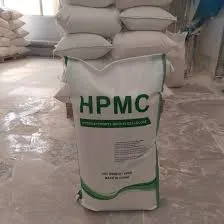
Oct . 02, 2024 10:46 Back to list
Hydroxyethyl Cellulose Applications in Paint Formulations and Performance Enhancements
Hydroxyethyl Cellulose for Paint A Versatile Thickener and Stabilizer
In the realm of paint formulation, achieving the right consistency, texture, and stability is essential to ensure high-quality finishes and ease of application. One of the key ingredients that has garnered attention for its excellent properties in this respect is hydroxyethyl cellulose (HEC). This water-soluble polymer has become increasingly popular as a thickener and stabilizer in various paint types, including water-based, latex, and acrylic formulations.
What is Hydroxyethyl Cellulose?
Hydroxyethyl cellulose is a non-ionic cellulose derivative derived from the natural polymer cellulose. Through a chemical process, the hydroxyl groups in cellulose are modified by the addition of ethylene oxide, resulting in the formation of HEC. This modification enhances the solubility of cellulose in water, making it an ideal candidate for use in paint formulations. HEC is known for its ability to form a clear, viscous solution, which provides excellent rheological properties.
Benefits of Using Hydroxyethyl Cellulose in Paints
1. Thickening Agent One of the primary functions of HEC in paint formulations is as a thickener. It contributes to the viscosity of the paint, allowing for better application control. This property is particularly crucial in preventing drips and runs during application, ensuring an even coating on surfaces.
2. Stabilization HEC helps to stabilize emulsions, preventing the separation of components in paint formulations. This stability is vital to maintaining the appearance and performance of paints over time. The polymer functions as a protective colloid, helping to keep pigments suspended and evenly distributed throughout the paint.
3. Improved Workability The addition of HEC enhances the workability of paints, making them easier to spread and manipulate during application. Painters appreciate the improved open time, which refers to the period during which the paint remains workable before it begins to dry. This extended application window allows for better blending and touch-up work.
4. Water Resistance HEC contributes to water resistance in paint formulations, which is essential for exterior paints exposed to moisture. The polymer forms a film that helps to repel water, minimizing the risk of blistering and peeling.
5. Eco-Friendly Option As a cellulose derivative, HEC is derived from natural, renewable resources, making it an environmentally friendly choice. With increasing consumer demand for sustainable products, the use of HEC aligns with the trend towards greener formulations.
hydroxyethyl cellulose for paint

Applications of Hydroxyethyl Cellulose
HEC finds application in various types of paints, including
- Water-Based Paints Its solubility in water makes HEC particularly suitable for water-based paints, ensuring they maintain their desired properties even when diluted.
- Latex Paints HEC is commonly used in latex paint formulations to improve viscosity and stability while providing excellent application characteristics.
- Acrylic Paints The use of HEC in acrylic paints enhances the overall performance, contributing to better adhesion, gloss, and durability.
- Specialty Coatings HEC can also be found in specialty coatings, such as those used for decorative finishes or protective applications, where specific performance characteristics are required.
Considerations for Use
While HEC offers numerous benefits, considerations must be made regarding its concentration and the balance of other formulation components. The effectiveness of HEC can vary based on its molecular weight, which directly influences the viscosity and performance characteristics of the paint. Formulators often conduct trials to optimize the formulation, ensuring that the desired performance metrics are met.
Conclusion
Hydroxyethyl cellulose has established itself as a pivotal component in modern paint formulations. From enhancing viscosity and stability to improving workability and contributing to eco-friendly practices, HEC offers versatile solutions for paint manufacturers. As the industry continues to evolve, the role of HEC is likely to expand, driven by the demand for high-performance, sustainable products that meet the expectations of both consumers and professionals alike. Understanding and leveraging the properties of hydroxyethyl cellulose can lead to superior paint formulations that stand the test of time.
-
Versatile Hpmc Uses in Different Industries
NewsJun.19,2025
-
Redispersible Powder's Role in Enhancing Durability of Construction Products
NewsJun.19,2025
-
Hydroxyethyl Cellulose Applications Driving Green Industrial Processes
NewsJun.19,2025
-
Exploring Different Redispersible Polymer Powder
NewsJun.19,2025
-
Choosing the Right Mortar Bonding Agent
NewsJun.19,2025
-
Applications and Significance of China Hpmc in Modern Industries
NewsJun.19,2025







